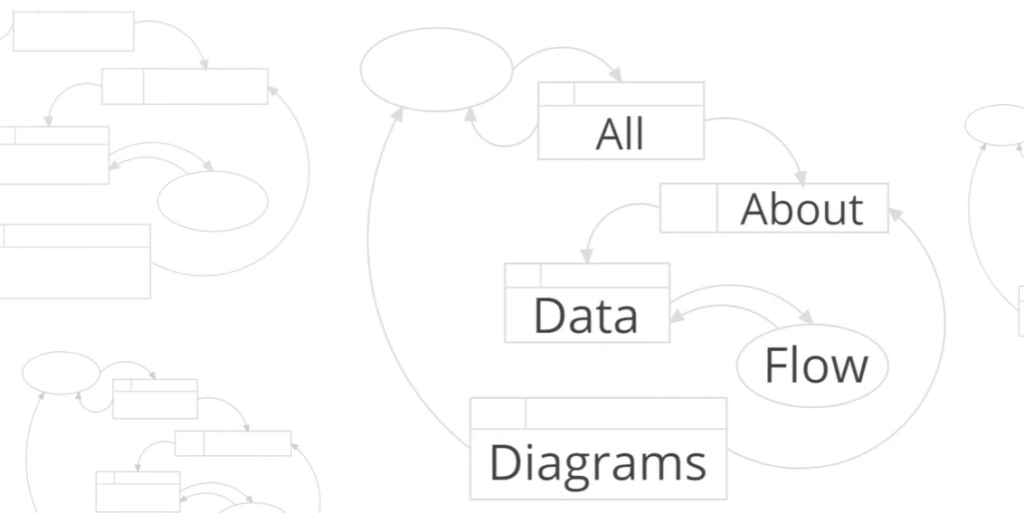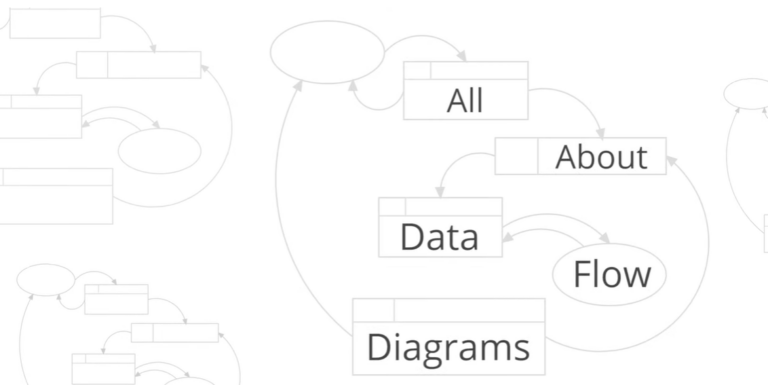Clarity is crucial for professionals who map systems on a regular basis, particularly when describing the basic interactions that take place across intricate platforms. The Level 0 Data Flow Diagram, also known as the context diagram, is one of the most remarkably effective tools in system modeling. In order to prevent developers, designers, and analysts from getting bogged down in technical details, it skillfully depicts the entire system as a single process, encircled by its external entities and the data currents that flow through it.
Teams can start system discussions with a remarkably clear visual by utilizing the Level 0 DFD. This diagram functions as a lens, enlarging the inputs, outputs, and interactions that are most important. The Level 0 diagram establishes the framework for scalability and iterative discovery without delving into the intricate details of backend logic. Stakeholders who are eager to comprehend the wider system functionality but may not be highly involved in the architecture will especially benefit from it.
| Diagram Level | Description |
|---|---|
| Level 0 (Context) | Shows system as one process with its interaction to external entities, without internal detail. |
| External Entities | Users, third-party apps, or other systems interacting with the core system |
| Data Flows | Input/output arrows showing how data enters or leaves the system |
| Purpose | Identify system boundaries and clarify inputs and outputs |
| Tools Used | Lucidchart, Figma, Creately, Visual Paradigm |
| Also Known As | Context Diagram |
| Verified Source | https://www.geeksforgeeks.org/levels-in-data-flow-diagrams-dfd/ |
Level 0 DFDs are meticulously crafted to preview the scope without becoming bogged down in logic, making them comparable to the first chapter of a procedural manual for seasoned software engineers. There is a purpose to the abstraction. It is purposefully made to act as a conduit for communication between system designers and business users, particularly in the early stages of a project. Early misinterpretations can be greatly decreased by using this common visual grammar.

It’s interesting to note that context diagrams continue to be useful even as systems develop into expansive architectures—consider services like Spotify or Uber. Level 0 maps are frequently reviewed by product teams as part of redesigns or replatforming projects. It is comparable to inspecting the foundation prior to remodeling a home. Notably, some Fortune 500 companies incorporate Level 0 DFDs into their onboarding materials to facilitate the quick integration of system roles and boundaries by new team members.
Millions of people started working remotely during the pandemic, and efforts to transform the digital landscape rapidly increased. Level 0 mapping systems enabled remote teams to preserve common mental models as cloud-based architectures grew. These diagrams’ visual consistency reduced knowledge silos and confusion and proved to be incredibly resilient under pressure.
Level 0 diagrams are now essential teaching tools in academic circles. They play a significant role in university courses on systems design and analysis. They are used by professors to help students understand the distinction between internal processes and external triggers—concepts that are frequently abstract until they are presented in this way. The format’s simplicity makes it a pedagogical asset because it is surprisingly low in cognitive load.
From the standpoint of industry trends, visual modeling has grown in popularity. Diagramming tools are now more widely available thanks to platforms like Lucidchart and Figma. What was formerly only used by engineers is now useful in marketing, logistics, and even human resources departments. The diagrams’ ability to illustrate relationships without using technical jargon is what makes them appealing. The use of symbols, arrows, and labels—a universal design language—speeds up cross-functional cooperation considerably.
However, not every team uses these diagrams efficiently. In the haste to build, there is a propensity to omit preliminary modeling, especially in agile environments. Paradoxically, neglecting the context diagram frequently results in fundamental misconceptions that manifest at a later stage of development cycles. Teams can prevent scope creep and misalignment by using Level 0 diagrams in system reviews or sprint planning.
Another particularly creative aspect of the diagram is its simplicity. It distills rather than overloads viewers with data. Teams are forced to ask more insightful questions by the deliberate simplicity: Who are our users? What data do they transmit or receive? Which external systems do we need to make room for? These questions impact governance and compliance strategies in addition to design, particularly in sectors like healthcare and finance.
Businesses set the standard for incredibly clear documentation by incorporating a Level 0 DFD into early-phase brainstorming. Additionally, it supports the current trend in digital infrastructure toward transparency. Having a high-level, shareable view of system interaction becomes a compliance asset as privacy concerns grow and data regulations tighten. Even without extensive technical knowledge, regulatory teams can rapidly comprehend what data enters and exits core systems.
A number of low-code and open-source platforms have integrated DFD generation straight into their design processes in recent years. Because of the high efficiency of this automation, systems analysts can create visual summaries without having to put in extra work. Streamlining operations and releasing human talent for more strategic problem-solving is a subtle but impactful change.
Level 0 DFDs are being used more and more to define the boundaries of human-AI interaction at businesses that are experimenting with AI integration. The context diagram, for example, can show where the handoff between AI and human agents takes place in customer support bots. This clarity has ramifications for society, especially in terms of making sure that automation builds user trust rather than undermines it.
Data flow diagrams are narratives rather than merely tools, especially when they are at Level 0. They provide an account of how a system interacts with its surroundings. Additionally, the need for context-based clarity is only increasing as systems become more intricate, entangled, and opaque. With the rise of AI, IoT, and decentralized technology in the upcoming years, abstraction diagrams’ use is probably going to increase rather than decrease.
